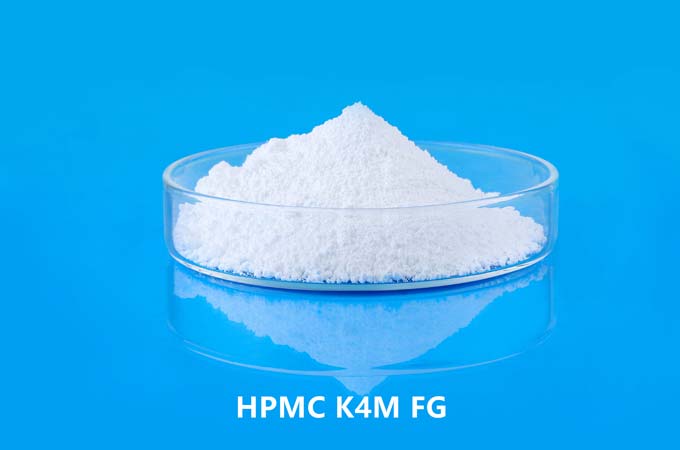Hydroxypropyl methylcellulose (HPMC) is a versatile polymer widely used in multiple industries, especially in the fields of pharmaceuticals, food, cosmetics, building materials and personal care products. Its unique properties and environmental characteristics make it play an important role in promoting sustainable product development.
1. The source of HPMC and its environmental characteristics
HPMC is mainly made from natural plant cellulose that is chemically modified, usually from renewable wood pulp or cotton fibers. The renewability of this raw material gives HPMC a natural environmental advantage. Unlike petroleum-based polymers, HPMC is derived from natural resources, reduces dependence on fossil fuels, and has a relatively small impact on the environment during production.
Although the process of producing HPMC involves chemical treatment, modern manufacturing technology has greatly reduced energy consumption and wastewater emissions. Many HPMC production plants use efficient wastewater treatment systems to reduce pollutant emissions and ensure a lower environmental footprint. In addition, HPMC is a biodegradable material, which means that after its service life, it will not cause long-term pollution to the environment, which is in line with the concept of circular economy.
2. Application in the pharmaceutical and food industries
The most common application of HPMC in the pharmaceutical industry is as a coating agent and excipient for pharmaceutical tablets. Compared with traditional synthetic chemical coatings, the use of HPMC is more environmentally friendly. It can provide a non-toxic, non-allergenic protective layer, delay the release of drugs, and improve the stability of drugs. This not only helps to extend the shelf life of drugs, but also reduces waste. At the same time, the non-toxic and biocompatible properties of HPMC make it an ideal alternative material to replace certain environmentally unfriendly petroleum-based polymers.
In the food industry, HPMC is widely used as a thickener, emulsifier and stabilizer in low-calorie foods and vegetarian products. For example, in vegetarian capsules and plant-based foods, HPMC can replace gelatin from animal sources. Unlike gelatin, HPMC not only uses plant raw materials in the production process, but its use reduces dependence on animal resources, which is in line with the increasing consumer concern for sustainability and animal welfare.
3. Role in construction and materials science
The application of HPMC in building materials is particularly significant. As an efficient thickener, binder and water retainer, it is widely used in cement, gypsum, plaster and paint. The advantage of this material is that it can improve the working performance of building materials while reducing the amount of cement and other materials, indirectly reducing carbon dioxide emissions.
One of the sustainability goals of the modern construction industry is to reduce the impact on the environment by using efficient materials. HPMC reduces the waste of water resources during construction by increasing the water retention and construction efficiency of the material. In addition, it can keep cement and gypsum products operable for a longer time and reduce material waste. This performance of HPMC increases the service life of the material and reduces the consumption of resources, which is in line with the design concept of sustainable building materials.
4. Application in personal care products
As people's requirements for the environmental protection and safety of personal care products continue to increase, the application of HPMC in this field is also increasing. As a non-irritating and non-allergic thickener and emulsifier, HPMC is widely used in products such as shampoo, conditioner, skin cream and gel. Compared with other chemical synthetic thickeners, HPMC is more gentle on human skin, and its natural source makes the product more environmentally friendly and sustainable.
Another important application of HPMC in personal care products is as a component of environmentally friendly packaging materials. As the demand for green packaging materials increases, HPMC can be used as a component of bio-based films for the packaging of food and personal care products. Due to the biodegradable properties of HPMC, it can effectively replace some difficult-to-degrade petrochemical plastics and reduce the pollution of packaging waste to the environment.
5. Promote circular economy and resource conservation
HPMC supports the development of circular economy by promoting sustainable design and production of products. In many applications, HPMC can replace traditional non-renewable materials, reduce resource waste and environmental pollution. For example, the use of HPMC helps to extend the service life of products and improve resource utilization efficiency. In addition, the biodegradability of HPMC means that it can be naturally decomposed after being discarded, avoiding environmental problems caused by landfill and incineration.
Resource conservation is one of the core of sustainable development. The versatility of HPMC enables it to promote resource conservation in many ways. First, HPMC improves the performance of materials and reduces the demand for raw materials in the production process. Second, HPMC can replace some expensive or scarce resources, reducing production costs and resource consumption. Finally, due to the biocompatibility and degradability of HPMC, its use reduces the long-term burden on the environment and supports the recycling of resources.
As a multifunctional material derived from natural cellulose, the application of HPMC in multiple industries provides strong support for sustainable product development. Its environmental protection characteristics, resource conservation ability and promotion of circular economy make it one of the representatives of sustainable materials in various industries. By reducing resource waste, reducing environmental pollution and replacing non-renewable resources, HPMC not only provides new possibilities for product design and production, but also lays a solid foundation for the future development of green economy.
Offering a broad spectrum of cellulose ether products such as wholesale HPMC, Kima Chemical excels in providing industry-specific solutions. Our deep technical expertise helps businesses streamline operations, improve quality, and achieve greater efficiency across a wide range of industrial applications.
 English
English 日本語
日本語 français
français Deutsch
Deutsch Español
Español italiano
italiano русский
русский português
português العربية
العربية Türkçe
Türkçe Nederland
Nederland



